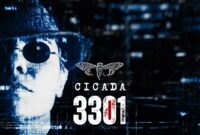3 nmhto durno teh drolw prti: This seemingly nonsensical phrase immediately sparks curiosity. Is it a coded message, a fictional language, or simply a typographical error? This exploration delves into the potential meanings behind this cryptic string of characters, examining its structure, linguistic origins, and possible contextual implications. We’ll consider various decryption methods, exploring the possibilities of letter substitution and pattern recognition to uncover the hidden message within.
The investigation will cover several approaches. We will analyze the phrase’s structure, looking for repeating patterns or groupings that might indicate word breaks or common letter combinations. A detailed structural analysis, including a table illustrating possible letter substitutions, will be presented. Furthermore, we’ll explore potential contexts where such a phrase might appear, from literature and games to more clandestine communications. Finally, creative interpretations, including a short story and a fictional language built around the phrase, will be developed to fully explore its potential.
Deciphering the Phrase
The phrase “3 nmhto durno teh drolw prti” appears to be a jumbled or deliberately misspelled sequence of words. Its meaning is unclear without further context, suggesting it might be a code, a cipher, or simply a typographical error. We will explore several possibilities to decipher its potential meaning.
The most likely explanation is that the phrase is a result of a deliberate scrambling of letters, possibly a simple substitution cipher or a transposition cipher. Analyzing the individual words reveals no immediately recognizable English words, suggesting a more complex method of encoding. The presence of numbers (“3”) further hints at a structured approach to the encoding process.
Possible Interpretations
Given the apparent scrambling, several interpretations are possible. We can explore these by considering different types of ciphers and potential misspellings. A simple reversal of the words might yield some clues, as might a letter substitution based on a key. The number “3” might indicate a three-step process or a key to the cipher.
- Reversal Cipher: Reversing the order of words does not produce a coherent phrase.
- Substitution Cipher: This involves replacing each letter with another according to a set of rules. Without a key, this is difficult to solve definitively. For example, “n” could consistently be replaced with “a,” “m” with “b,” and so on.
- Transposition Cipher: This involves rearranging the letters or words of the phrase according to a specific pattern. This would require knowledge of the pattern used.
- Fictional Language: It’s also possible that the phrase represents words from a fictional language, with “nmhto,” “durno,” “teh,” “drolw,” and “prti” representing individual words within that language.
Examples of Coded Phrases and Decryption Methods
Many historical and fictional examples demonstrate the use of coded phrases. Understanding these methods helps in analyzing the given phrase. The complexity of decryption varies widely depending on the cipher used.
- Caesar Cipher: A simple substitution cipher where each letter is shifted a certain number of places down the alphabet. For example, with a shift of 3, ‘A’ becomes ‘D’, ‘B’ becomes ‘E’, and so on. Decryption involves shifting the letters back.
- Vigenère Cipher: A more complex substitution cipher that uses a keyword to encrypt the message. Each letter is shifted a different number of places based on the corresponding letter in the keyword. Decryption involves identifying the keyword and applying the reverse shift.
- Rail Fence Cipher: A transposition cipher where the message is written diagonally across a grid and then read row by row. Decryption involves reconstructing the grid.
Contextual Exploration
The phrase “3 nmhto durno teh drolw prti,” assuming it’s a coded message, could appear in a variety of contexts, each influencing its interpretation and significance. Understanding the potential contexts is crucial for effective deciphering. The complexity of the code suggests a deliberate attempt at concealment, pointing towards scenarios involving secrecy or puzzle-solving.
The potential contexts for such a phrase are diverse and range from fictional narratives to real-world scenarios involving coded communication. Analysis of the phrase’s structure and the potential for hidden meanings within the seemingly nonsensical arrangement of letters suggests a deliberate attempt at obfuscation.
Potential Contexts of Appearance
The phrase’s unusual structure and apparent lack of meaning suggest several potential contexts. In fictional literature, especially mystery novels or spy thrillers, such coded messages are commonplace. They often serve as clues for the protagonist to decipher, leading them closer to solving the mystery. Similarly, video games, particularly those with puzzle elements, frequently incorporate coded messages or ciphers as part of the gameplay. Escape rooms and puzzle boxes also often utilize similar techniques to add an extra layer of complexity and challenge. Finally, the phrase could also appear in online forums or communities dedicated to cryptography and code-breaking, where users might share and attempt to decipher such puzzles.
Scenarios for Communication and Concealment
Several scenarios could explain the use of this particular phrase for communication or concealment. Imagine a clandestine operation where agents need to communicate sensitive information without detection. A coded message like this allows for a degree of plausible deniability; if intercepted, it appears nonsensical. Alternatively, it could be used in a game of espionage, where players exchange secret messages using a pre-agreed upon code. A similar scenario could involve a personal journal or diary, where the author uses a code to protect private thoughts and feelings. Finally, the phrase could be a part of a larger puzzle or riddle, designed to test the ingenuity and problem-solving skills of those attempting to decipher it.
Comparison to Other Coded Messages
This phrase bears some resemblance to other known coded messages and secret languages, particularly those employing simple substitution ciphers or transposition ciphers. Simple substitution ciphers involve replacing each letter with another letter according to a key. Transposition ciphers, on the other hand, rearrange the letters of the message without changing the letters themselves. However, this phrase might involve a more complex cipher or a combination of techniques. Unlike simpler codes like Caesar ciphers, which involve a fixed shift in letters, this phrase likely uses a more intricate system of substitution or transposition. It might also incorporate elements of other code types, such as using a keyword or a specific pattern to determine the substitution or transposition rules. The absence of obvious patterns suggests a more sophisticated coding system than a basic substitution or transposition cipher.
Wrap-Up
Unraveling the mystery of “3 nmhto durno teh drolw prti” proves to be a fascinating journey into the world of cryptography and linguistics. While definitive decryption remains elusive, the exploration has highlighted the diverse approaches to deciphering coded messages and the creative potential of seemingly random strings of characters. The process has illuminated the importance of structural analysis, contextual understanding, and creative interpretation in solving linguistic puzzles. Whether the phrase represents a deliberate code or an accidental jumble of letters, its ambiguity serves as a testament to the richness and complexity of language itself.




